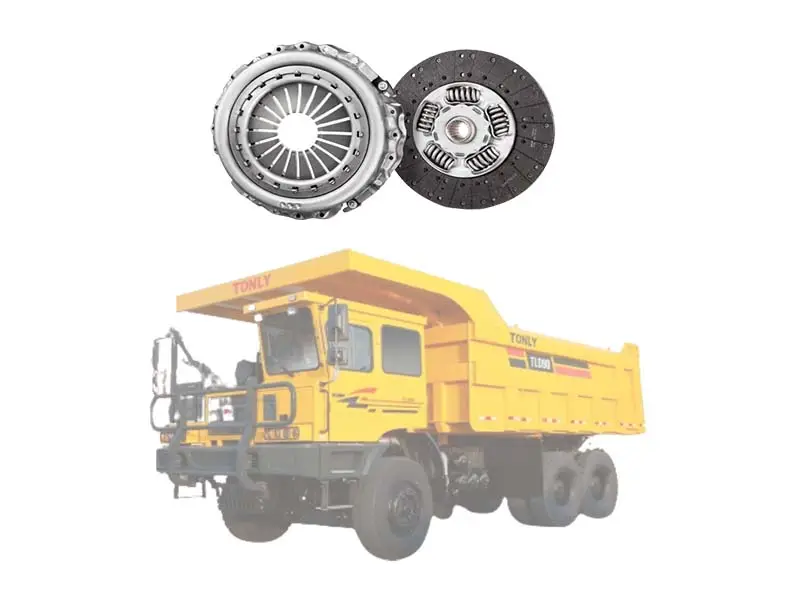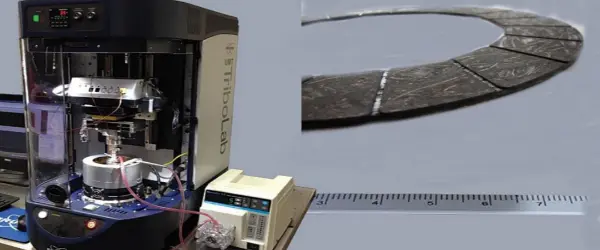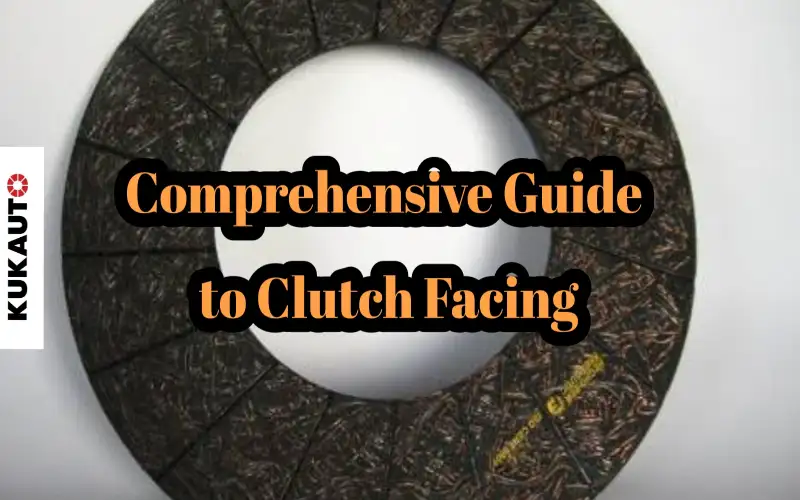How to choose the friction material for clutch facings?
Clutch Facing allows smooth engine sliding against the transmission system in automobiles or machines. It protects engine performance and keeps it working for extended periods.
And do you know the key part influencing clutch facing? It is the friction material.
Atypical terminologies confuse buyers. They remain in a condition of Buy or Not-Buy. Is that so with you? No problem. I have listed significant friction materials with pros, cons, and when to use them.
Let's absorb the types of friction material.
Is friction material essential for clutch facing?
Yes, it is 100% ESSENTIAL to have high-quality clutch-facing material.
In automobiles, there is CONTINUED friction between the engine and transmission systems. The back-and-forth sliding of the two solid surfaces produces heat for a short period. Clutch Facing is the crucial factor in preventing significant damage with the smooth sliding and power transmission from the engine to the transmission systems.
What if there is no clutch facing?
Believe me, you'll face many problems. For instance:
- Metal-to-metal friction will decrease the performance of your automobile engine or INDUSTRIAL MACHINES.
- Excessive heat production will occur either due to low-quality or no-facing material. It may burn out
- Noise production will be QUITE HIGH. Even it can make you DEAF.
Seven primary materials are used in making clutch facing
As I already highlighted the significance of a clutch-facing material, it is 200% essential to choose a TOP-QUALITY material.
Are you ready to filter out the best material?
Well, I have listed seven FUNDAMENTAL facing materials you should know.
- Glass-fiber
Glass fiber is a polymer of SILICON DIOXIDE. Do you know why we call it Glass-fiber?
Because it contains fine glass fibers in the chain. In the Clutch facing, it permits smooth movement between the engine and transmission system.
The following features make it a TOP choice for clutch facing.
- High Tensile Strength
- Dimensional stability
- Great fire resistance
- High Heat resistance
Vehicle type used:
- Motorcycle
- Passenger car
- Pickup
- Composite yarn
Composite yarn is a textile fabric. It comprises two or more types of fibers adjoined together that increase the overall strength.
Manufacturers mix natural fibers such as cotton, silk, wool, or sometimes synthetic fibers such as polyester, nylon, etc.
Mixing the multiple types of fibers provides access to various features of durability and strength.
In the clutch facing, composite yarn comprises the:
- High tensile strength
- High elasticity
- High durability
- Water resistance
Vehicle type used:
- MCV
- Wide-body mine car
- Light-duty mine car
- Bus
- Coach
- Cored Yarn
Cored yarn fibers have two primary components.
- A central core of fibers
- A sheath of staple fibers
Core spun yarn is manufactured by the spinning of the composite yarn that increases many features, such as strength. All these features make it a FAVORABLE choice for the clutch facing.
Here are the features of the cored yarn used in the clutch facing.
- High Durability
- High Tensile Strength
- High elasticity
Vehicle type used:
- MCV
- Wide-body mine car
- Light-duty mine car
- Bus
- Coach
- Aramid Fiber
Aramid fiber is a polyamide compound used in various INDUSTRIAL and aerospace applications.
Apart from that, it is a well-known material for the clutch facing. Many features make it a suitable material for the clutch facing. These are:
- Heat Resistance
- High Tensile Strength
- Very High Melting Point exceeding 500 degrees Celsius
- Low Flammability
Typical forms of para-aramid fiber are KEVLAR and meta-aramid NOMEX.
Vehicle type used:
- Mobile cranes
- Overhead cranes
- Public transit
- Trains
- Metal
Popular metals used in the clutch facing are iron or copper-based sintered bronze. Sintering is the process of molding metals to achieve sufficient adhesion and densification.
Sometimes, semi-metallic material is used in the clutch facing. It contains metals with organic compounds for coherent properties.
Metals have got the following properties.
- High friction coefficient
- High-temperature resistance up to 300 degrees Celsius.
- Greater Torque capacity
- Durable
Vehicle Type used:
- Racing Cars
- Railway motorcar
- Ceramic
Ceramics is one of the MOST popular materials used in clutch facing. It has a high-temperature resistance reaching at most 1000 degrees Celsius.
Ceramics comprises many metals such as copper, iron, tin, bronze, silicon dioxide, and graphite.
Ceramic provides a HIGH static to dynamic friction ratio, enabling smooth and protected engine sliding against the transmission system.
Here are the prominent features of ceramics.
- High-temperature resistance
- High Friction ratio
- Wear Resistant
Vehicle type used:
- Heavy-duty truck
- Heavy-duty mine car
- Tractor
- Engineering vehicle
- Construction machinery
- Carbon fiber
Carbon fibers consist of more than 90% content of the carbon. In the clutch facing, they provide enough friction for the smooth processing of the engine.
Carbon fiber is often mixed with polymer resins to get the required strength and mechanical properties.
- High-temperature resistance up to 300 degrees Celsius
- High Tensile Strength
- High durability
Vehicle type used:
- Special vehicle
- Racing car
How to choose the best friction material for clutch facing?
When I had been looking for the clutch-facing material for the first time, I was like, what is the best material? What should I choose?
But I don't want you to face any such complexities. For this reason, I have listed significant features to look for in an ideal material.
- Temperature stability and operational robustness
Temperature stability is quite essential. In automobiles, heat production is a typical scenario. The high-temperature resistance ensures high operational robustness.
To optimize the life of the clutch facing, you should find an excellent material quality for friction. It should have high-temperature stability without affecting any single tool.
- Lifetime
When I find the best material, long life is the biggest goal. And it is possible with the high temperature and pressure resistance.
A standard vehicle produces 100 degrees Celsius, while the peak load of a heavy automobile can put up to 400 degree Celsius temperature. At higher temperatures, life decreases significantly.
A high-temperature-resistant material is an ideal choice in that case.
- Structural Integrity
When Operating the automobile, centrifugal force impacts the Clutch Facing.
To cope with the damaging impact of friction, you should focus on the burst speed and tensile strength. The Burst speed must be higher than the maximum engine speed.
- Coefficient of friction
The coefficient of friction plays an indispensable role in maintaining the clutch facing. The higher the friction coefficient is, the less force will do the job for the clutch system.
Whenever you are looking for material, ensure high FRICTION COEFFICIENT.
EndNote
Look. Finding an excellent quality friction material gives tough times. You have to be meticulous and find the BEST MATERIAL. That is where you have to select two things:
- Quality material
- A reliable manufacturer offers that material.
Do you need a solution?
Kukauto is the perfect option for clutch-facing material and relevant products. You get the best quality materials at affordable prices. Check out our collection of all the products.






